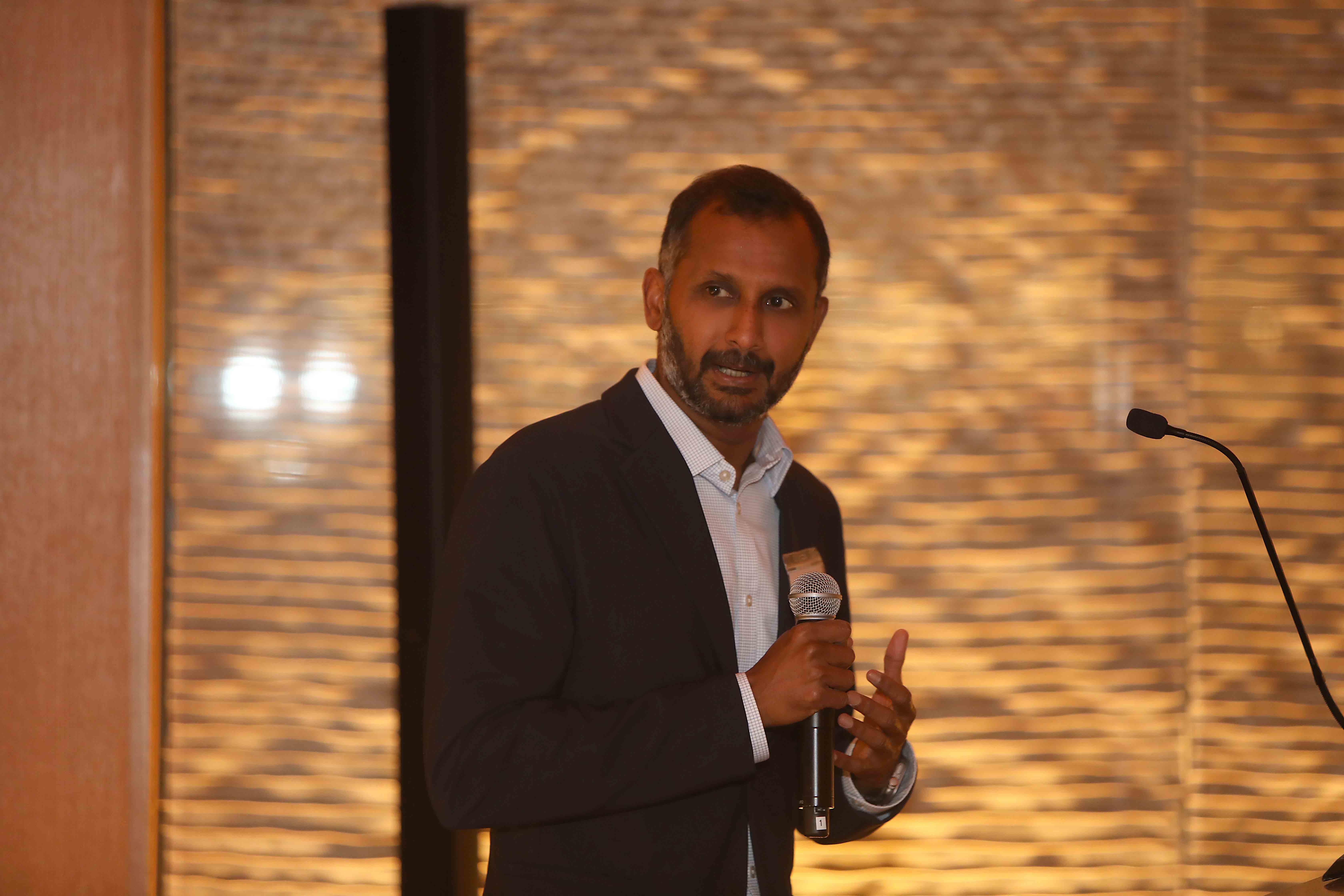-
Solution overview
Develop the technical skills that Fortune 500 enterprises and the public sector want.
-
U.S. Department of State (Cyber Advance for Women in MENA)
Build your skills and launch your career in Cybersecurity.
-
USAID Jordan (Tech for Jobs)
Increase your data analytics capabilities with this free program.
6 Key Takeaways from the AI Council’s Inaugural CHRO Dinners
As generative AI (GenAI) advances and adoption continues to rise, HR leaders know that they need to be prepared for the impact this technology will have on their organization. However, many are at a loss for where to start. According to a Gallup survey, 65% of CHROs say AI “can be used to improve the performance of most roles in their organization” — but they also have concerns about everything from data privacy and security to workforce governance.
HR leaders need a forum where they can come together to discuss the impact GenAI is having on their business and their workforce—and to learn from one another's experiences. With that in mind, Correlation One has created the AI Workforce Development Council, an industry group that brings HR leaders together to discuss the key takeaways from the intersection of AI and their organizations.
In September and November, dozens of HR leaders from leading enterprise organizations joined Correlation One for the inaugural CHRO Dinners. The guests were joined by members of the Correlation One team, and by guest speakers and GenAI experts Assaf Zeevi, Professor at Columbia University’s Graduate School of Business, and Conor Grennan, Dean of MBA and Graduate Students at NYU Stern School.

HR leaders converged at Le Bernardin Privé in New York City.
Below, we share six of the main takeaways from the events, including specific attendee observations, as well as recommendations for what HR leaders should consider when taking the next step.
1. Not a one-off innovation, but a paradigm shift
Historically, technological progress has unfolded through the replacement of older systems and services with new, innovative technologies. Think of streaming services like Netflix and Spotify replacing physical media like DVDs and CDs, or software programs like Excel replacing manual spreadsheets.
GenAI disrupts this pattern in that it is not a direct replacement for any specific entity. Instead, it spans multiple segments in a way that defies conventional categorization. The closest analogy might be the invention of the computer itself, which revolutionized multiple industries and transformed the way we work and live.
Bottom line: Keep in mind that GenAI represents a broad technological shift and cannot simply be seen as a replacement for existing systems. It has the potential to transform multiple aspects of organizations and should be approached with an open mind and a willingness to adapt.
2. Think of GenAI like an intern
GenAI stands out from traditional AI by directly interacting and conversing with humans. It can support, augment, or fully automate human labor, allowing enterprises to use GenAI for customer communication, conversation analysis, text generation, and valuable insights.
That said, CHRO dinner attendees agreed that AI should not be viewed as a replacement for human workers, but rather as an augmentation and enhancement to their capabilities. It's best to treat GenAI “like an intern”—capable of performing useful tasks, but always in need of supervision to ensure accuracy and avoid potential biases. Attendees theorized that GenAI adoption will follow the 80/20 rule: GenAI may be able to handle the 80% of tasks that are replicable and automatable—but it’s that remaining 20% where human ingenuity will continue to be essential.
Bottom line: Think of GenAI as a tool to augment human capabilities rather than a replacement for human workers. This technology has the potential to enhance various work processes, but it is important to provide proper supervision and guidance to ensure its effective and ethical use.

Correlation One co-founder and co-CEO Sham Mustafa welcomes attendees to the CHRO Dinner.
3. Identify quick wins and low-hanging fruit
With any new technological innovation, it is tempting to jump straight into large-scale implementation. However, when it comes to GenAI, it is important to take a measured approach.
This means starting with small, manageable projects that can demonstrate the value and impact of GenAI within the organization. Dinner attendees reported running internal hackathons using GenAI technologies with specific objectives. By starting with smaller, focused projects, HR leaders can test the waters and gain valuable insights into the capabilities and limitations of GenAI.
With regards to implementation within the HR function itself, look for areas where AI can have an immediate impact and deliver tangible results. Some examples shared by CHRO Dinner attendees include optimizing job descriptions and generating other HR content, as well as streamlining interview and employee onboarding processes and even refining feedback for performance reviews. By focusing on these kinds of quick wins, HR leaders can demonstrate the value of GenAI to their organization and gain buy-in from stakeholders, which can help to build momentum and support for further AI initiatives.
Bottom line: When it comes to AI implementation, start with smaller, focused projects to identify quick wins and low-hanging fruit. This approach minimizes risks and allows for iterative adoption. By focusing on these quick wins, HR leaders can demonstrate value, gain buy-in, and build momentum for further AI initiatives.
4. To build or to buy, that is the question
Much like the gradual, bottoms-up adoption witnessed in SaaS, different departments within enterprises will embrace GenAI solutions differently. Data teams may choose to build their own AI tools to meet their specific needs, while marketing or customer success may opt to buy pre-existing AI solutions from vendors.
HR leaders will need to partner with other departments to make decisions on whether to build their own GenAI solutions or to buy existing ones. This decision will depend on various factors such as the specific needs of the organization, the resources available, and the level of expertise required for implementation.
Bottom line: HR leaders should collaborate with other departments to determine whether to build their own GenAI solutions or purchase existing ones. Various inputs and organizational dynamics come into play, and so taking a holistic and measured approach to the build vs. buy decision is warranted.
5. Prioritize data quality and security and beware of bias
Despite their capabilities, GenAI models are not immune to error. Risk management is a critical aspect of implementing GenAI in an organization, and a core part of HR leaders’ responsibility.
HR leaders must understand the potential challenges associated with this technology, including data privacy and security concerns, potential biases in AI algorithms, and the impact on workforce governance. Dinner attendees discussed the need for data to be up-to-date for model training purposes, as opposed to relying on historical data that may be biased or incomplete. Issues of data ownership and governance also arose.
To mitigate risk and ensure ethical usage, HR leaders should conduct thorough assessments of their organization's data infrastructure, establish clear guidelines and policies for AI adoption, and prioritize transparency and accountability in AI decision-making processes.
Bottom line: It is important for HR leaders to be aware of and address the risks and challenges associated with GenAI. This includes data privacy and security concerns, potential biases in algorithms, and the impact on workforce governance.

HR leaders exchange ideas about the potential of GenAI to shape the future of workforce management at Correlation One's CHRO Dinner.
6. Embrace a culture of learning and experimentation
GenAI is still evolving, and organizations must be adaptable and open to new ideas. HR leaders should create opportunities for employees to learn about GenAI and its potential impact. It’s important to encourage employees to experiment with the technology and provide a safe space for them to share their findings and insights. By embracing a culture of learning and experimentation, organizations can stay at the forefront of GenAI developments and maximize its potential benefits.
Building an AI culture hinges on trust. Transparency, ethical guidelines, education, feedback, accountability, data privacy, and open communication are all key elements in fostering a culture of learning and experimentation. When employees and stakeholders trust in AI's capabilities and intentions, it fuels a successful AI culture.
Bottom line: HR leaders should foster a culture of learning and experimentation around GenAI. By prioritizing transparency, ethical guidelines, education, feedback, accountability, data privacy, and open communication, organizations can create an environment that promotes trust and maximizes the potential benefits of this technology.
Invest in Human Potential
We’re standing at an inflection point in the evolution of GenAI in the workplace, and HR has a crucial role to play in harnessing that evolution to drive innovation and growth. But it’s important to remember that, for all its impressive capabilities, GenAI is ultimately just a tool and, like any tool, it’s only as effective as the humans who use it. By investing in your workforce's skills and knowledge, you not only empower your employees to work alongside AI but also elevate your organization's ability to adapt and thrive in this dynamic landscape.
As HR leaders, you hold the key to fostering a harmonious partnership between humans and AI. You can guide your organization towards a future where technology enhances rather than replaces, where innovation is driven by collaboration, and where humans and AI alike live up to their full potential.
Are you an HR leader interested in further discussions, insights, and collaboration around the impact of GenAI on the organization? Get in touch today.

.png?width=207&height=108&name=Mega%20menu%20%E2%80%93%20Featured%20Image%20Template%20(1).png)



